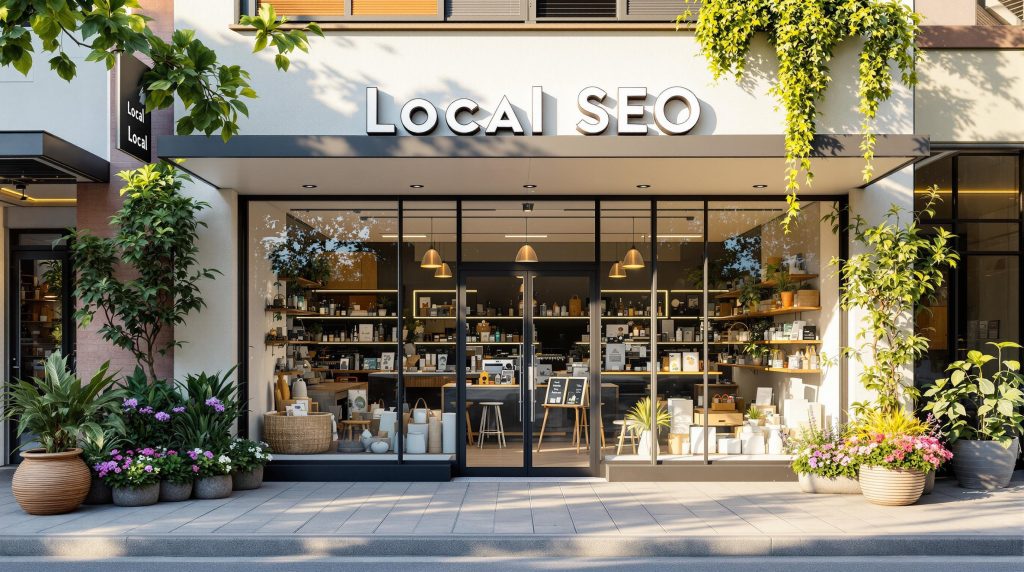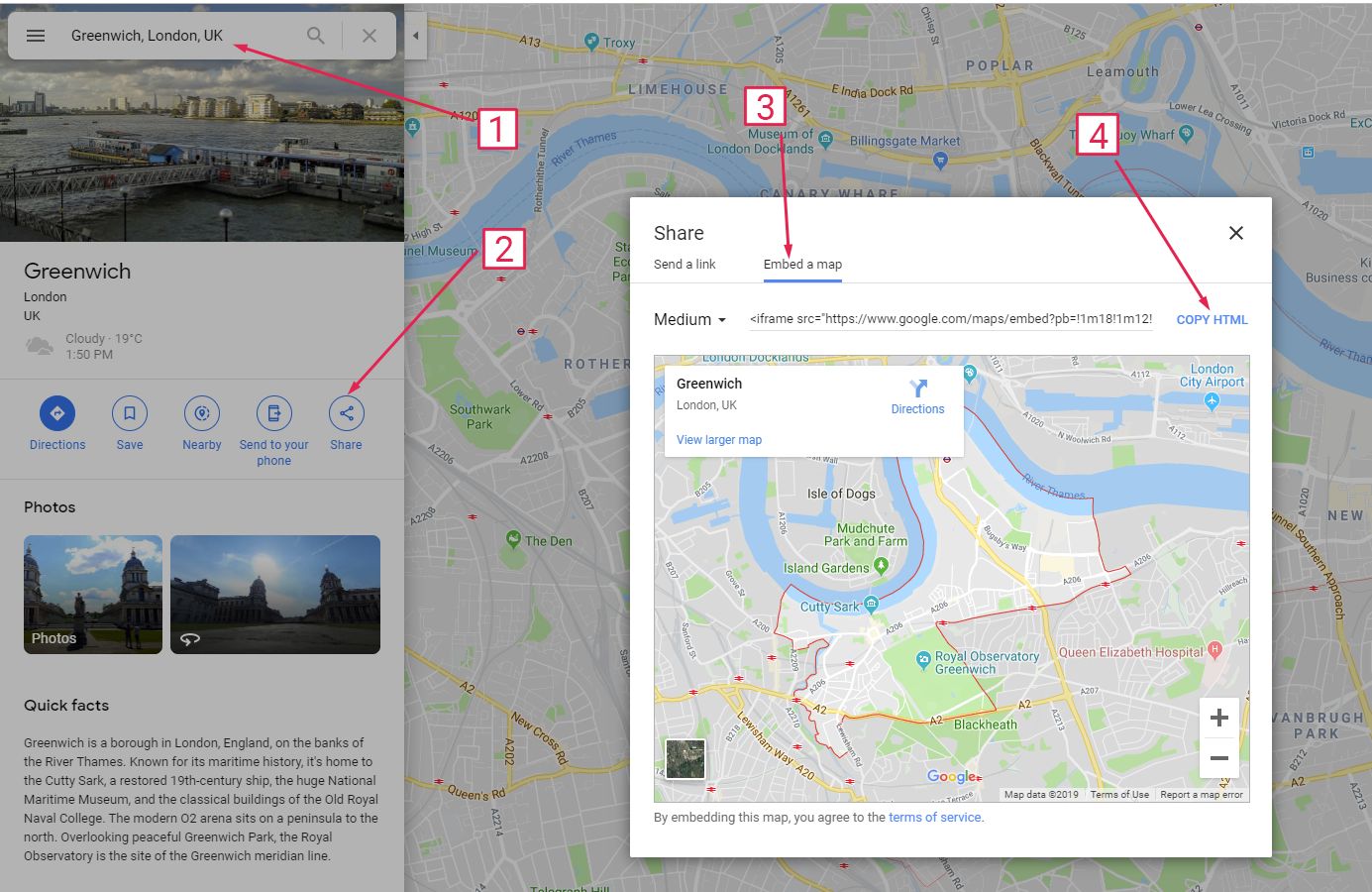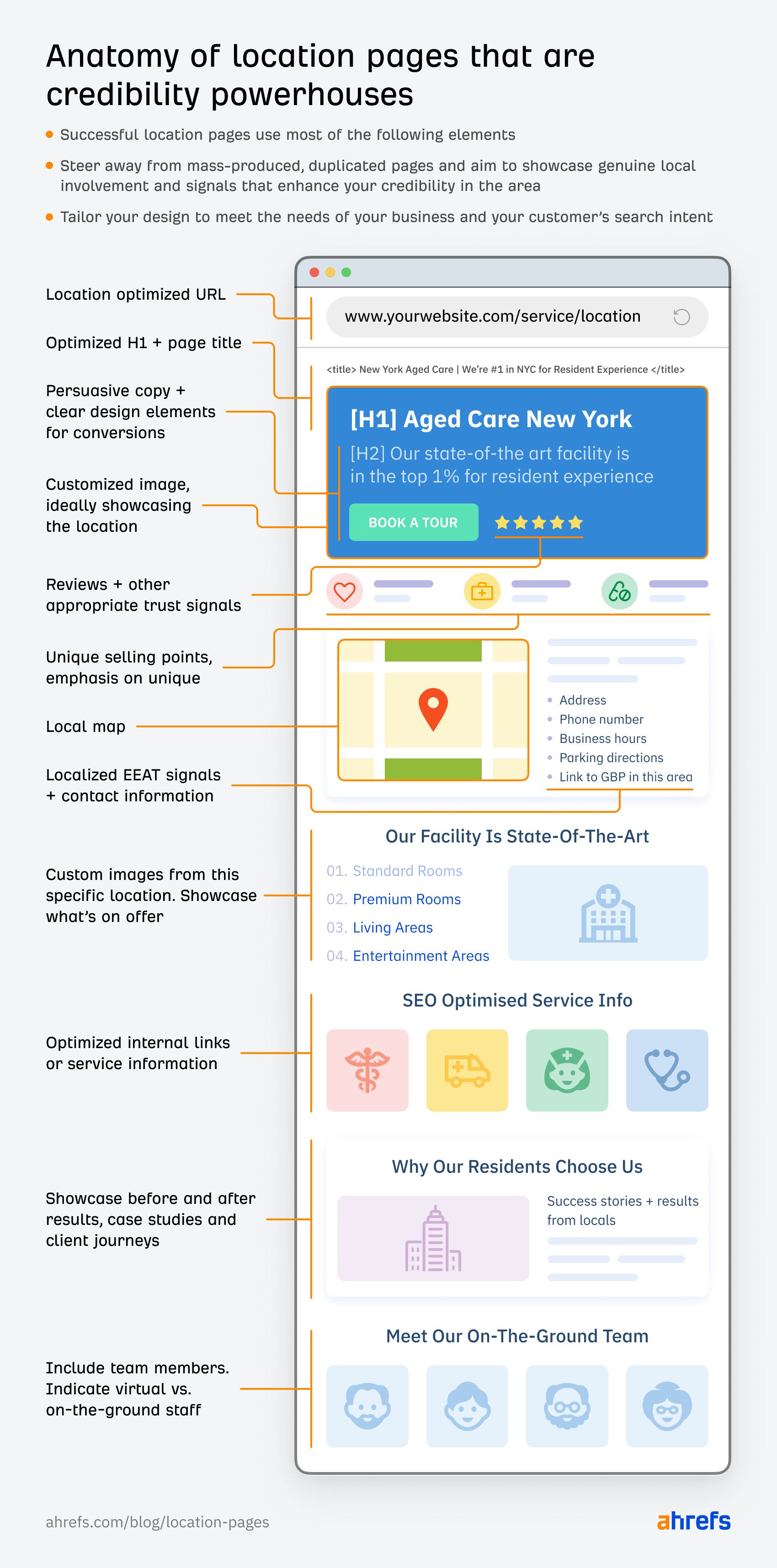How to Optimise Location Pages for Local SEO

Last Updated on 25 September 2025 by Dorian Menard
Location pages are essential for local SEO. They help businesses rank higher in local search results and attract nearby customers. To optimise them effectively, focus on these key areas:
- Accurate NAP Information: Ensure your Name, Address, and Phone number are consistent across all platforms.
- Google Maps Integration: Embed a map for easy navigation and better visibility.
- Structured Data: Use schema markup to provide clear business details to search engines.
- Location-Specific Content: Include unique descriptions, local keywords, and mentions of landmarks.
- Customer Reviews: Highlight recent, location-specific feedback to build trust.
- Mobile-Friendly Design: Optimise for mobile users with responsive layouts and fast loading times.
These strategies improve your search rankings, enhance user experience, and drive more local traffic. Let’s dive into the details of how to implement them.
Local SEO: Creating Location Pages for Higher Rankings
Essential Components of a Location Page
A strong location page is key to improving your local SEO. It should include specific elements that help both search engines and users easily find and trust your business. Here’s what you need to focus on:
| Element | Why it matters | Minimum standard | Example |
|---|---|---|---|
| NAP | Consistency signals legitimacy | Exact match with GBP; clickable phone | “Search Scope, 12 Example Rd, Perth WA 6000 |
| Map embed | Improves local intent & UX | Responsive Google Map near NAP | Map iframe with directions link |
| LocalBusiness schema | Makes details machine-readable | JSON-LD with name, address, phone, hours | Schema validated in Rich Results Test |
| Location-specific copy | Prevents duplication, matches intent | 300–600 words unique to suburb/city | Landmarks, service scope, neighbourhood terms |
| Reviews | Trust & conversion | 3–5 recent, city-specific quotes | “Installed on Beaufort St, Mount Lawley” |
| CTAs | Turn visits into leads | Call, quote form, hours above the fold | “Call (08)… |
| Mobile performance | Core Web Vitals & rankings | LCP ≤ 2.5s, INP ≤ 200ms, CLS ≤ 0.1 | Report from PageSpeed Insights |
Here are more details.
Accurate NAP Information
Your NAP – Name, Address, Phone Number – is crucial for local SEO. It tells search engines and users exactly where to find you. Make sure this information matches your Google Business Profile, is formatted correctly, and is clickable. Consistency across all platforms is non-negotiable.
"Inconsistent NAP information can lead to confusion among search engines and potential customers, raising red flags about the business’s legitimacy and reliability. This inconsistency can negatively impact local rankings and visibility".
Google Maps Integration

Adding Google Maps to your location page makes it easier for users to locate your business and improves your local search rankings. Embed a responsive, up-to-date map with clear directions from nearby landmarks.
This visual aid helps users, while structured data ensures search engines understand your location details.
Browse our Google Business Profile Services if you need any help with your maps rankings.
Use of Structured Data
Structured data, like the LocalBusiness schema, provides search engines with clear, standardised information about your business. This includes your name, address, phone number, opening hours, and more.
Properly implemented local structured data can improve your visibility in local search results.
To get it right:
- Use the JSON-LD format for structured data.
- Include all relevant business details.
- Validate your data using Google’s Rich Results Test.
- Keep the information updated.
"Location pages are a critical component of any small business’s local SEO strategy. By creating dedicated pages for each physical location or service area, businesses can improve their visibility in local search results, offer a better user experience, and build trust with potential customers".
Anatomy of a Winning Location Page
 Source: https://ahrefs.com/blog/location-pages/
Source: https://ahrefs.com/blog/location-pages/
Effective Location Page Strategies
Creating strong location pages means balancing user experience with SEO by crafting unique, localised content and ensuring technical accuracy.
Here are some effective strategies to consider:
- Tailored Content: Include area-specific service descriptions, introduce your local team, highlight community involvement, and feature neighborhood-specific promotions.
- Local Touches: Add details about area attractions, share community insights, showcase local customer testimonials, and adapt services to regional needs.
URL Structure for a Local Website
Here are the 3 most commonly used structure strategies for local landing page setups:
1. Single-Location Business
Example Business: GreenSprout Landscaping (Fictional Single-Location Landscaping Company)
- Homepage
URL:https://greensproutlandscaping.com
Ranks For: "Landscaping services," "Landscaping near me," "Lawn care company," "Landscaping maintenance."
SEO Strategy: Focuses on combining the brand with broad service-related terms to target a larger audience without geographical limitations, avoiding keyword cannibalisation with other pages. - Service Hub (Optional)
URL:https://greensproutlandscaping.com/services/
Ranks For: Organises service-specific pages to help users navigate offerings, improving site structure and internal linking.
SEO Strategy: Provides a single location for all services, boosting user experience and helping with navigation while concentrating link equity. - Service Page #1 (e.g., Lawn Maintenance)
URL:https://greensproutlandscaping.com/services/lawn-maintenance
Ranks For: "Lawn maintenance," "Lawn care services," "Lawn treatment near me."
SEO Strategy: Allows the page to rank for specific services without being limited by geographical terms. - Location Page (Optional)
URL:https://greensproutlandscaping.com/locations/springfield/
Ranks For: "Landscaping Springfield," "Landscaping company in Springfield," "Lawn care Springfield."
SEO Strategy: Targets city-specific keywords to attract local customers while avoiding conflicts with service pages.
2. Multi-Location Business Strategy #1: Service Pages with Location Hubs
Example Business: PureFlow Plumbing (Fictional Multi-Location Plumbing Company)
- Homepage
URL:https://pureflowplumbing.com
Ranks For: "Plumbing services," "Emergency plumber near me," "Plumber company."
SEO Strategy: Avoids local terms here to establish broad authority while reducing keyword competition with location-specific pages. - Service Hub (Optional)
URL:https://pureflowplumbing.com/services/
Ranks For: Acts as a directory for plumbing services like "Drain cleaning," "Water heater repair," and "Leak detection."
SEO Strategy: Centralises services for better navigation and internal linking to boost page authority. - Service Page #1 (e.g., Drain Cleaning)
URL:https://pureflowplumbing.com/services/drain-cleaning/
Ranks For: "Drain cleaning," "Clog removal services," "Unclog pipes near me."
SEO Strategy: Focuses on ranking for the specific service nationally without geographical terms. - Location Hub (Optional)
URL:https://pureflowplumbing.com/locations/
Ranks For: Organises location-specific pages to simplify navigation and improve keyword targeting for individual cities.
SEO Strategy: Ensures search engines can easily crawl and index pages for each city, consolidating link authority. - Location Pages (e.g., Miami and Chicago)
URL:- Miami:
https://pureflowplumbing.com/locations/miami/ - Chicago:
https://pureflowplumbing.com/locations/chicago/
Ranks For: - Miami: "Plumbing services Miami," "Emergency plumber Miami."
- Chicago: "Plumbing Chicago," "Plumber near Chicago."
SEO Strategy: Targets local customers by integrating city names, reducing competition with national terms, and creating hyper-focused landing pages.
- Miami:
3. Multi-Location Business Strategy #2: Location-Specific Service Pages
Example Business: SolarWave Energy (Fictional Multi-Location Solar Panel Installation Company)
- Homepage
URL:https://solarwaveenergy.com
Ranks For: "Solar panel installation," "Renewable energy solutions," "Solar company near me."
SEO Strategy: Focuses on brand authority and general terms to attract national traffic, avoiding location-specific competition. - Service Hub (Optional)
URL:https://solarwaveenergy.com/services/
Ranks For: "Solar panel installation services," "Solar system maintenance," "Residential solar installation."
SEO Strategy: Improves navigation and helps consolidate authority for individual service pages. - Location-Specific Service Page (Miami)
URL:https://solarwaveenergy.com/locations/miami/solar-installation/
Ranks For: "Solar panel installation Miami," "Solar energy company Miami," "Miami solar installation services."
SEO Strategy: Combines both location and service-specific keywords in the URL for better local relevance and SERP visibility. - Location-Specific Service Page (Los Angeles)
URL:https://solarwaveenergy.com/locations/los-angeles/solar-repair/
Ranks For: "Solar repair Los Angeles," "Los Angeles solar system maintenance."
SEO Strategy: Targets service-specific keywords for Los Angeles, ensuring that local queries match intent and content. - Location Hub (Optional)
URL:https://solarwaveenergy.com/locations/
Ranks For: "Solar panel companies in [city/state]," consolidating navigation for users and bots.
SEO Strategy: Strengthens internal linking and provides a clear structure for multi-location navigation.
Summary of SEO Strategy Reasoning:
- Homepage: Builds broad authority and reduces keyword cannibalisation with other pages.
- Service Hub (Optional): Enhances user experience and centralises internal linking for stronger SEO performance.
- Service Pages: Focuses on specific terms to rank nationally or regionally without geographical competition.
- Location Pages: Hyper-targets local audiences, blending location and service keywords for relevance.
- Location Hubs (Optional): Simplifies navigation and improves crawlability for multi-location businesses.
sbb-itb-c74901f
Content Strategies for Local SEO
Creating location-focused content is crucial for ranking well in local searches and connecting with your audience. The trick is to balance optimisation for search engines with content that genuinely serves local customers.
Creating Location-Specific Content
After setting up your location page structure, the next step is to develop content that speaks to both local audiences and search engines. Instead of relying on generic descriptions, craft unique content that reflects the distinct traits and needs of each location.
Here are some tips for effective location-specific content:
- Mention local landmarks and customise service descriptions to address specific community needs.
- Use keywords naturally in headers, meta descriptions, and throughout the text.
- Incorporate local data like statistics or market trends relevant to the area.
For example, research shows that "76% of location-based mobile shoppers visit a store within a day of searching for it online". This underscores the importance of creating content that not only ranks but also motivates local users to take action quickly.
In addition to tailored content, customer reviews can further strengthen your local strategy.
Here are some example of local SEO content Australian businesses can create.
Incorporating Local Reviews and Testimonials
Customer reviews are a powerful way to build trust and credibility with potential clients. Here’s how you can make the most of them:
- Feature recent reviews: Highlight up-to-date, location-specific feedback that showcases your expertise and strengths. Make sure these reviews include specific details about your products or services.
- Show community involvement: Share your participation in local events, collaborations with nearby businesses, or other community initiatives. This demonstrates your connection to the area and builds trust with local customers.
- Respond to reviews: Engage with all reviews – positive or negative – to show accountability and a commitment to customer satisfaction.
The goal is to keep your content authentic while optimising it for search engines. Use local keywords naturally and provide helpful, actionable information to guide potential customers in making decisions about your business.
Technical and Design Aspects
Your location pages aren’t just about content – they also need to excel in technical and design areas to ensure a great user experience and solid search visibility.
Mobile UX & Performance Targets
| Metric | Target | How to hit it | Verifier |
|---|---|---|---|
| LCP | ≤ 2.5s | Compress hero, lazy-load below-the-fold | PageSpeed Insights |
| INP | ≤ 200ms | Defer non-critical JS; minimise 3rd-party | CrUX report |
| CLS | ≤ 0.10 | Set width/height; avoid layout shifts | Lighthouse |
| Tap targets | ≥ 44×44px | Increase button padding; avoid crowded links | Mobile-friendly test |
| Font size | ≥ 16px | Use system fonts; ensure strong contrast | Accessibility checks |
Mobile-Friendly Design
With over 55% of web traffic coming from mobile devices, having a mobile-first design is a must. Here’s how to make your pages mobile-ready:
- Optimise images to reduce loading times and minimise server requests.
- Use responsive layouts that adjust seamlessly to any screen size.
- Ensure touch-friendly elements with proper spacing for easy navigation.
- Use legible text with adequate size and contrast for readability.
To stay ahead, regularly test your pages using Google’s Mobile-Friendly tools to catch and fix any issues that could hurt your rankings.
Here are 10 mobile UX tips you can use for your site!
Clear and Simple Layout
A well-organised layout helps users find what they need quickly. Focus on these essential elements:
- NAP information (Name, Address, Phone)
- An interactive map for easy navigation
- Operating hours displayed prominently
- Clear contact options
- Relevant location-specific content
To enhance usability, consider these design tips:
- Load critical content first to improve user experience.
- Use a clear heading structure to guide visitors.
- Maintain ample spacing between elements for a clean look.
- Ensure strong color contrast for better visibility.
- Follow WCAG 2.1 guidelines to make your pages accessible to all users.
Guidelines and Mistakes to Avoid
Common Errors to Avoid When Creating Location Landing Pages
Avoiding common mistakes is just as important as implementing the right strategies. Here’s a breakdown of typical errors and how to address them:
| Error Type | Solution |
|---|---|
| Duplicate Content | Write unique content for each location, focusing on local details and context. |
| Inconsistent NAP | Ensure your business name, address, and phone number (NAP) are consistent across all platforms. Regularly verify this information. |
| Poor Mobile Design | Use responsive design, optimise for touch interactions, and focus on local search usability. |
| Missing Schema | Add LocalBusiness schema markup to help search engines display accurate local search results. |
"Schema markup allows search engines to distinguish between each location, ensuring that local search results display the correct details." – GMBapi.com
Using JSON-LD schema is a great way to share essential business information like:
- Business hours
- Service areas
- Contact details
- Customer reviews
- Physical location data
Make it a habit to audit your pages using tools like Google’s Rich Results Test to catch and fix technical issues early. Track your progress with Google Analytics and Search Console to measure results and refine your strategy based on real data.
Conclusion and Key Points
Steps for Optimising Location Pages
To optimise location pages effectively, focus on combining technical precision, engaging content, and a design that prioritises user needs. These components ensure your pages perform well for both search engines and local customers.
"Location pages are a critical component of any small business’s local SEO strategy." – SmartSites Blog
Key actions include keeping your NAP (Name, Address, Phone number) details consistent, using schema markup correctly, and crafting unique content tailored to each location. Regular audits are essential to keep everything accurate and functional.
Benefits of Optimised Location Pages
Optimised location pages offer several clear advantages:
- Better Search Visibility and User Experience: Using schema markup and ensuring mobile-friendliness boosts local search rankings and makes navigation easier for users.
- Increased Local Credibility: Positive customer reviews and ties to the local community enhance trust within specific areas.
- Trackable Performance: Measure success with metrics like:
- Local search rankings
- Traffic from specific locations
- Engagement data
- Conversion rates from local users
Optimisation isn’t a one-and-done task. Regular updates and audits are crucial to maintaining accuracy, fixing technical issues, and staying aligned with changing algorithms. With these strategies in place, businesses can secure a strong foothold in their local markets.
Location landing pages are one of our core local SEO strategies and a great way to generate leads for our Perth SEO clients.